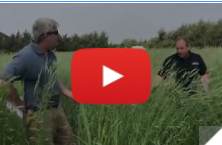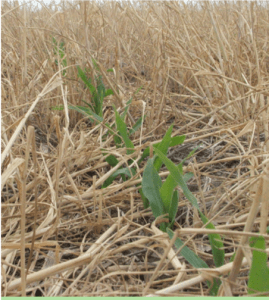Rye Not Try Cover Crops?
Winter cereal rye is not a magic silver bullet that cures your soil instantly, but it can address many issues that all farmers are challenged with. Rye is very popular and widely used partly because of its excellent cold tolerance which leads to the widest planting windows of any cover crop. We have even planted cereal rye in December and had excellent spring stands. Rye is always the number one cover crop because of all the benefits that it brings to the table. (highlighted below)
 Our Elbon winter cereal rye is northern type rye with excellent growth and forage yield potential. Elbon stems tend to be larger and more hollow than most rye types (more like triticale) which give it additional palatability and forage quality. See our comparison video by clicking on the button to the right. We have excellent supplies of Elbon rye and are ready to ship to your location. Give us a call or shoot us an email to get your order now! 402-469-6784 or keith@greencoverseed.com
Our Elbon winter cereal rye is northern type rye with excellent growth and forage yield potential. Elbon stems tend to be larger and more hollow than most rye types (more like triticale) which give it additional palatability and forage quality. See our comparison video by clicking on the button to the right. We have excellent supplies of Elbon rye and are ready to ship to your location. Give us a call or shoot us an email to get your order now! 402-469-6784 or keith@greencoverseed.com
Here is a list of just a few of the benefits of winter cereal rye:
-
 Weed control
Weed control -
A rye cover crop can be a tremendous asset by controlling weeds in multiple ways. Cereal rye can sequester large amounts of nitrogen, leaving very little available for weeds which suppresses their germination. This N tie-up is managed in corn with a carefully timed nutrient program and it encourages soybeans to foster larger colonies of rhizobia to produce more of their own nitrogen. Rye also contains allelopathic compounds (natural herbicides) called benzoxazilinones that suppress the growth of many small-seeded weed species, in particular marestail and pigweed species. Cereal rye mulch can be dense enough that very small seeds, like pigweed, simply lack enough energy storage to grow through a thick mulch before they run out of energy for lack of sunlight.
-
-
Erosion control
-
This past spring demonstrated that we still very much have a soil erosion problem in this country. Runoff from heavy spring rains cut millions of gullies across this country. Topsoil is too precious to allow to wash away. A rye cover can reduce erosion during the winter between crops, and if left as a mulch can also prevent erosion until the next crop is established.
-
-
Better water infiltration and retention
-
Soil covered in a thick rye mulch will have better infiltration of rainfall and less evaporation of soil moisture during the growing season.
-
-
Less runoff and flooding –
-
If more rainwater goes into a soil covered in rye mulch, that means less will run off the soil, to cause flooding downhill and downstream. Given the destructive nature of the flooding we saw this past spring and summer, this may be one of the biggest advantages of all.
-
-
Reduction in compaction and deeper-rooted crops –
-
The deep root system of rye is capable of penetrating hardpans and dense subsoils, opening passageways for the roots of the following crop to grow ever deeper. The root exudates from rye feed a horde of soil aggregating microbes that improves soil structure and naturally eliminate compacted layers.
-
-
Improved trafficability
-
Rye mulch can act like “snowshoes” and help hold vehicles up in soil moisture conditions that would be impossible to drive on in bare or tilled soil. This can make both planting operations and timely post-emergent applications much more feasible.
-
-
More soil organic matter
-
Whatever is wrong with your soil, it can most likely be remedied by increasing soil organic matter. There are two ways to do this: either bring huge amounts of organic matter in from somewhere else (which is expensive, and in which case you really aren’t increasing organic matter, you are just moving it) or by growing more on every acre. Every added day of photosynthesis on an acre increases the pool of soil organic matter and rye is doing this in colder temperatures than any other cover crop that you could choose.
-

 Weed control
Weed control